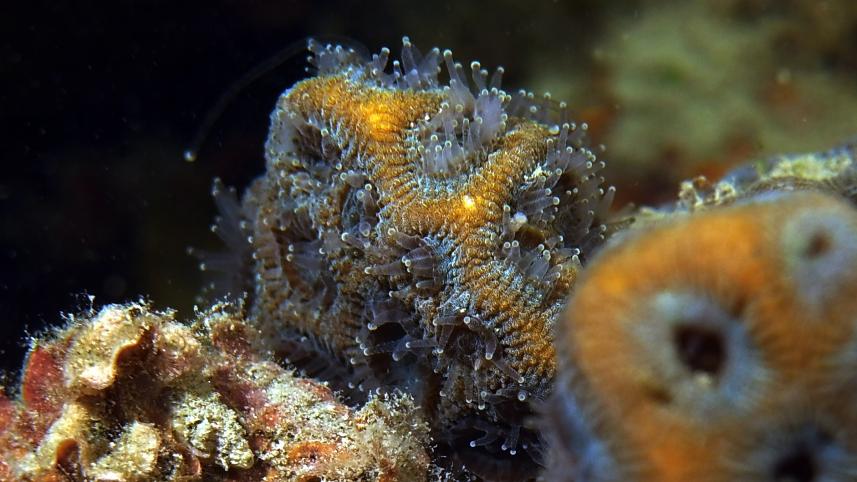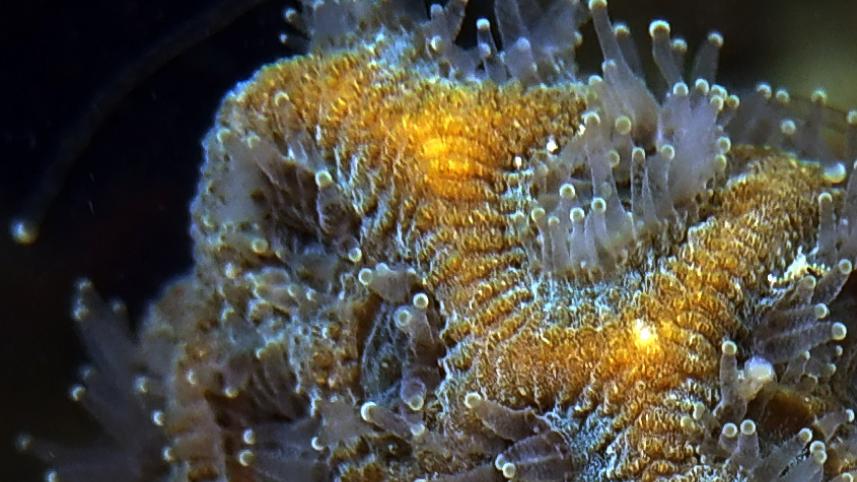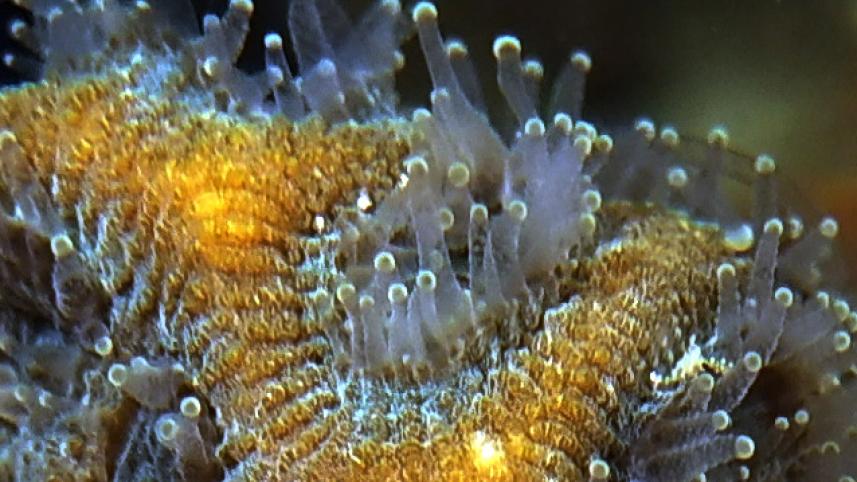Brains of the sea

A Lobophyllia corymbosa, or brain root coral, was recently spotted around 10ft under the surface of the Bay of Bengal on Saint Martin's Island.
This fascinating species of large polyp stony coral occurs on reefs in shallow waters of the Red Sea, off the coast of East Africa, and in other parts of the tropical Indo-Pacific.

These corals have large polyps each of which secrete a corallite around itself, which forms the skeleton of the coral. The corallites tend to be shaped like hourglasses with thick and fleshy polyps inside.

The corallites normally remain retracted throughout the day and are extended at night for feeding. The symbiotic algae zooxanthellae, hosted within its own body, provides much of its nutritional requirements through the process of photosynthesis.

They also feast on micro-planktons from time to time. Though this coral species has been listed in the "Least Concern" category by the IUCN due to its wide range, it is, however, still subject to the reef degradation that threatens all corals due to rising global temperatures and ocean acidification.



 For all latest news, follow The Daily Star's Google News channel.
For all latest news, follow The Daily Star's Google News channel.
Comments